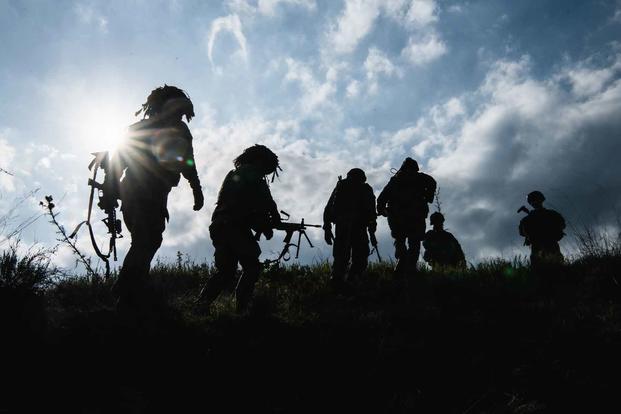In the aftermath of Spc. Vanessa Guillén's murder, a damning investigation found that the command climate from the platoon level all the way to senior positions at Fort Cavazos, Texas -- previously known as Fort Hood -- had "major flaws," including a systematic mistreatment of junior troops, particularly women.
A dozen Army officials were fired, but the major question pressed on service leaders was, "How can another Fort Hood be prevented?"
Part of the answer was Cohesion Assistance Teams, or CATs, which were first stood up in 2020 and have since been fine-tuned to help commanders with the culture of their formations. The teams are dispatched to brigades at a higher command's request to compile climate information, such as retention rates and soldier interviews. The goal is to give brigade leadership a bird's-eye view of the health and welfare of their team and then work on potential solutions.
Read Next: Army Basic Leader Course Will Soon Be Longer and Have Graded Land Navigation
Maj. Gen. John Kline, commander of the Army's Center for Initial Military Training, or CIMT, which oversees the program, was quick to note these aren't legal teams sent to sharpshoot command teams, and no one is losing their jobs after surveys are complete.
"No matter how comfortable you think your climate is, it's good to get an outside set of eyes to show you a much broader view of what's going on out there," Kline told Military.com on Monday during the annual Association of the United States Army conference in Washington, D.C. "Otherwise, you live in ignorant bliss."
Commanders already have access to numerous metrics, such as instances of sexual assault, but the CAT surveys are among the only instances where all of that information, as well as elements that can't be tracked by numbers on a spreadsheet, are consolidated.
The review goes beyond the traditional command climate survey, which produces results that can be vague and out of context. The CATs can also get feedback on how soldiers are feeling through more detailed questioning, such as how safe they feel in their barracks or whether they feel valued.
The CATs and their surveys are focused on organizations, not individual leaders, and are separate from inspector general probes and 15-6 investigations, which can also involve interviews and collection of information and evidence.
The surveys are already scheduled for Army brigades throughout next year and into 2025 -- a signal that commanders are not being singled out because formations can have leadership changes between a CAT survey being scheduled and completed.
So far, 12 CAT surveys have been done, with the goal of conducting six every year.
The CAT includes a lieutenant colonel; multiple senior noncommissioned officers; behavioral health professionals; legal officials; and a chaplain, among other experts in fields such as health care. During the survey, between 50 and 100 soldiers are interviewed, often in group settings.
The soldiers are chosen to be statistically representative of a brigade's demographics. A team from the Walter Reed National Military Medical Center also surveys soldiers before and after the CAT conducts its review of the command climate, asking its own questions about health and welfare.
The CAT findings can illuminate particular issues cropping up in brigades. For example, Military.com reviewed a leaked copy of findings for 2nd Infantry Brigade Combat Team, 11th Airborne Division, which found that excessive drinking is likely pervasive among the ranks. In the harsh Alaska climate, soldiers frequently see drinking as the only indoor recreation.
In other cases, survey teams can get more granular and highlight things commanders are too detached to see on a normal day, such as funeral details often being isolated from their units if they are performing those duties for extended periods of time.
Once the survey is complete, units are able to develop plans of action to address any troubling findings. For example, 3rd Brigade, 10th Mountain Division, was eyeing a three-day training program on sexual assault and prevention for soldiers ranging in rank between private and sergeant.
"After Fort Hood, I think the mindset was, where else might we have high-risk indicators where we can see something like that again? Yeah, we've got to make sure that doesn't happen again," Kline said.
-- Steve Beynon can be reached at Steve.Beynon@military.com. Follow him on X @StevenBeynon.













